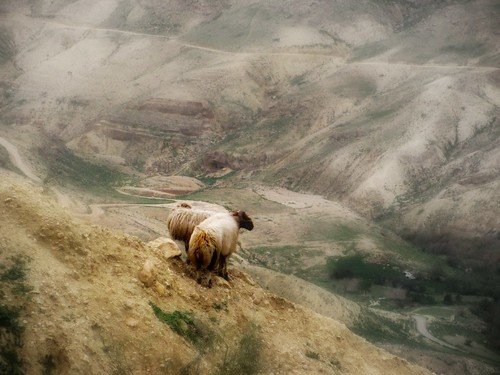- Designing the next generation of community-based natural resource management projects. No agriculture. Weird. Well, not so much actually.
- Extension systems have a website! Yeah but do they need one?
- Informal seed system working just fine in Indian Himalayas. So maybe the extension system is not needed? But, hey, they have a website, did I mention that?
- Climate Change and Crop Production: The Book. And: The Conference. No but wait, here’s another.
- The unusual crop that is cassava.Yeah, but in The Economist?
- ” …among the largest collections of endophytes…” Not a lot of people know that.
- Old Irish goats (and others, to be fair) meet to talk about, well, Old Irish goats.
- The great Plant Cuttings.
- How to design an ethnobotanical garden. Would coca find a place?
- Musings on the evolution of weeds.
Livestock genetic resources meetings galore
Selection of pulses for better nutrition
Hot on the heels of the UK’s call for “advances in nutrition and related sciences” to be put to work to improve the efficiency of animal production, comes a paper surveying the protein content and composition of “107 cultivars of important grain legume species”. The primary motivation seems to have been to improve feed quality for pigs, especially for the organic sector which is not supposed to feed supplementary amino acids to make up the shortfall. From the abstract, it seems that feed quality could indeed be enhanced by selecting specific varieties. And a more diverse diet, to supply the amino acids in which most pulses are low?
Nibbles: Dog, Beer, Human Planet, Entomophagy, Food Atlas, Pepper, Barley
- When dog was on the menu.
- Going far, and far back, for beer. And indeed yeast. Always worth the effort.
- BBC launches Human Planet, focusing on “man’s remarkable relationship with the natural world.” Which apparently doesn’t include agriculture.
- Mexicans eat many moth species, and not just the larvae.
- Amazing interactive food atlas for the US. wish I had a use for it, but someone surely does.
- Breeding a “better” Jalapeño pepper — to hold more cheese, natcho.
- Food as politics; the tsampa-eaters of the TAR. h/t GOOD.
Nibbles: Genebank, Rice, State of the World, Experiments, Lathyrus, Malaria and lactase persistence, Advice, CWR, Feed
- The Ethiopian Institute of Biodiversity has been up to something, but it is hard to be sure what.
- IRRI is also up to something — Green super rice — but again it is hard to be sure what. Not golden at any rate.
- CIAT picks its favourites from the State of the World 2011 report.
- More than anyone has any right to want to know about the history and future of agricultural experimentation, but fascinating nonetheless.
- The nutritive value and toxicity of grasspea and its relatives.
- Milk may or may not provide some protection from malaria.
- Nutrition advice, filtered for you. Jeremy sez “I like No. 6.”
- Irish launch crop wild relatives website.
- The feed quality of crop residues gets the treatment.
